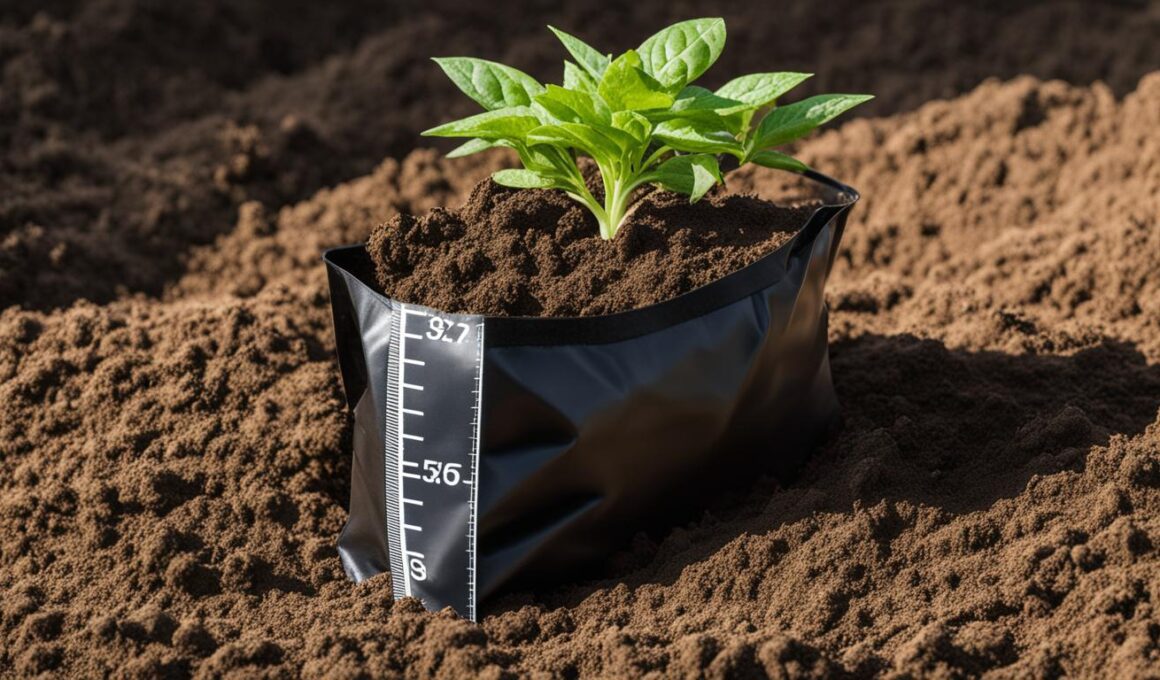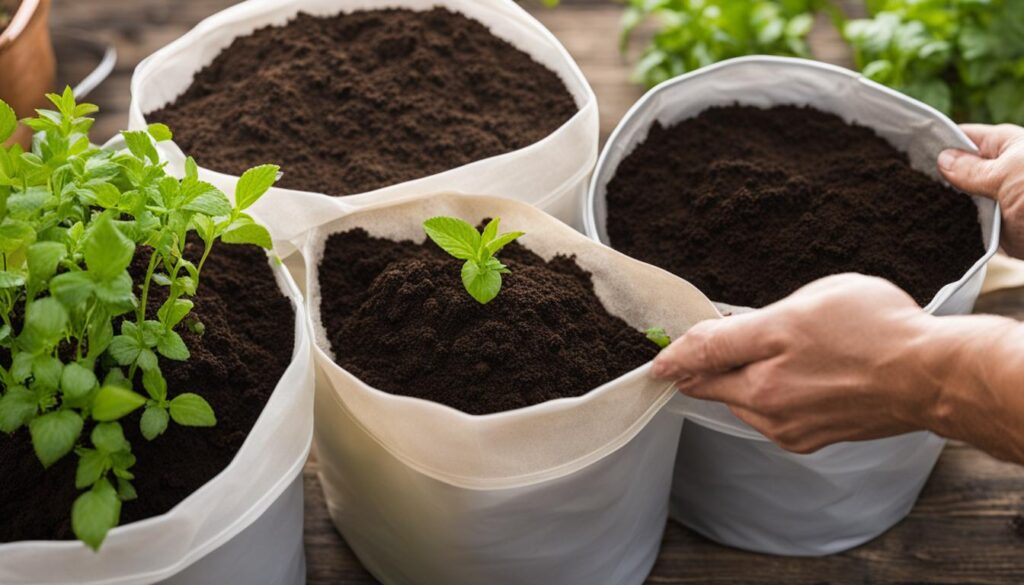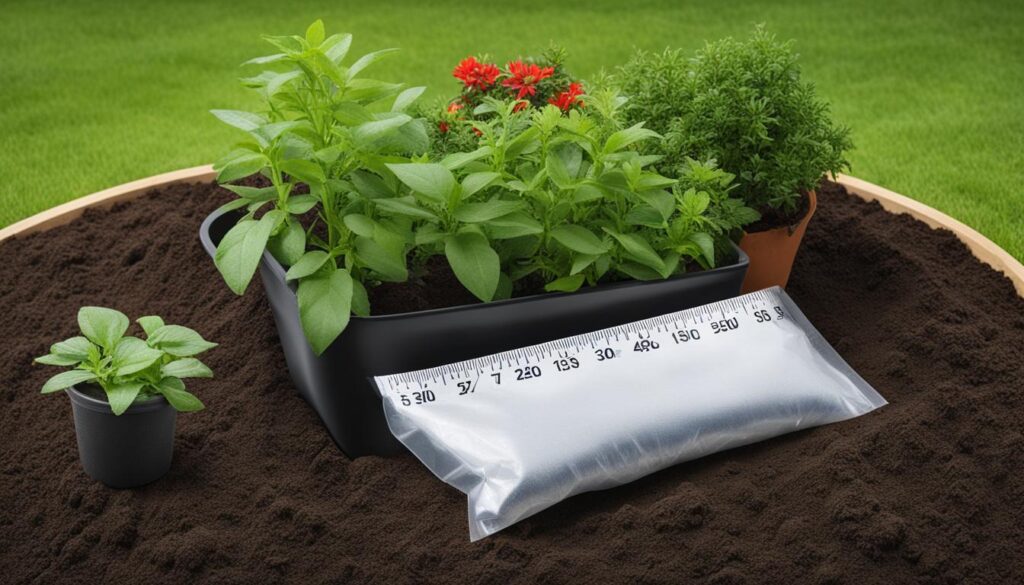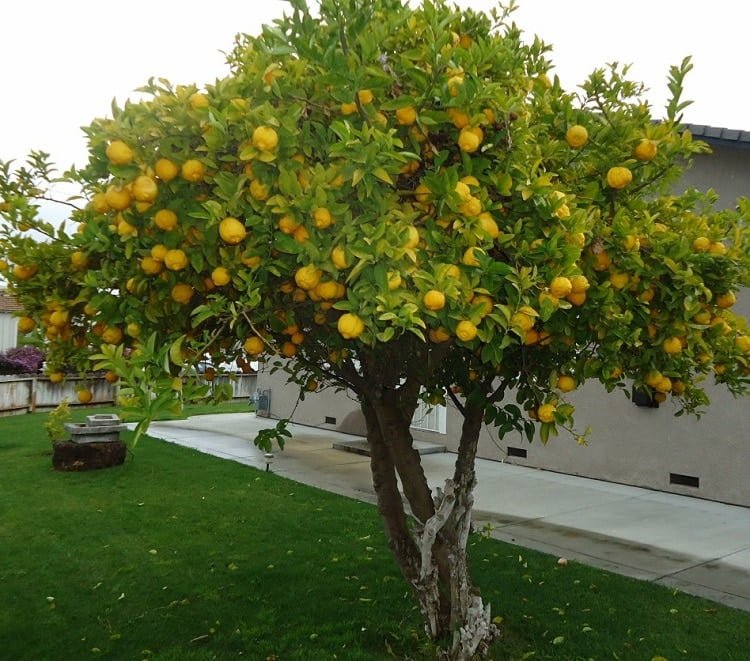Are you wondering how much soil you need for your 10-gallon grow bag? Determining the right amount can be a bit tricky, as grow bags are measured in gallons while soil is measured in cubic feet. But fear not, we have got you covered. In this article, we will break down the factors to consider and provide a general guide for determining the soil volume for your grow bags.
When it comes to soil quantity, the size of the grow bag plays a crucial role. For a 10-gallon grow bag, you will typically need approximately 1.34 to 1.5 cubic feet of soil. However, it’s essential to consider other factors like the type of plant, climate conditions, and soil mixture. Additionally, using an equivalent-sized hard bucket as a measurement tool can help you gauge the amount of soil needed accurately.
Remember, it’s always best to err on the side of caution and go with the higher recommended amount of soil. This accounts for settling and soil loss over time. And don’t forget to follow the specific recommendations provided by the grow bag manufacturer, as different bags may have varying gallon sizes.
Key Takeaways:
- Grow bags are measured in gallons, while soil is measured in cubic feet.
- A 10-gallon grow bag typically requires 1.34 to 1.5 cubic feet of soil.
- Factors such as plant type, climate conditions, and soil mixture should be considered when determining soil quantity.
- Using an equivalent-sized hard bucket can help measure the amount of soil needed per grow bag accurately.
- Always follow the recommendations provided by the grow bag manufacturer.
Using the Right Soil Mix for Your Grow Bag
Choosing the correct soil mixture is essential for successful grow bag gardening. The soil mix directly affects the growth and health of your plants, so it’s important to select a composition that suits their specific needs.
When it comes to soil mix for grow bags, there are several factors to consider. One of the key considerations is the water retention capability of the soil. Different plants have different water requirements, so choosing a soil mix that provides adequate drainage while retaining enough moisture is crucial.
Common soil mixtures for grow bags include a combination of peat moss, perlite, vermiculite, and compost. Peat moss helps with water retention, perlite and vermiculite improve drainage, and compost provides essential nutrients for plant growth. Finding the right balance of these components is important to create an optimal growing environment.
“The soil is the foundation of your plants’ health, so it’s important to choose the right mix for their specific needs.” – Gardening Expert
To determine the ideal soil mix, it’s best to consult gardening resources or experts who can provide recommendations based on the type of plants you intend to grow. They can guide you on the appropriate ratio of components to ensure your plants thrive in the grow bags.
| Soil Component | Function |
|---|---|
| Peat moss | Absorbs and retains water |
| Perlite | Improves drainage |
| Vermiculite | Improves drainage and retains moisture |
| Compost | Provides essential nutrients |
Using the right soil mix for your grow bags ensures that your plants have the necessary nutrients, moisture, and drainage for healthy growth. Remember to consider the specific requirements of your plants and consult experts for tailored recommendations.
Factors Influencing Soil Quantity in Grow Bags
When determining the amount of soil needed for your grow bags, there are several factors that can influence the quantity required. These factors include climate conditions, plant type, and soil requirements. Understanding and considering these factors will help you create an optimal growing environment for your plants.
Climate conditions play a significant role in determining the soil quantity needed for grow bags. In hotter climates, plants require more water retention, which means they will need more soil to provide adequate moisture. On the other hand, in cooler climates, plants may require less soil volume as they do not need as much water retention.
The type of plant being grown also affects the amount of soil needed in grow bags. Different plants have varying soil requirements, with some needing deeper root systems and more space for growth. It’s important to consider the specific needs of your plants when determining the soil quantity.
Soil compaction and settling should also be taken into account. Over time, the soil in grow bags can compact and settle, reducing its volume. To compensate for this, it’s recommended to initially fill the grow bag with slightly more soil than the exact amount needed, allowing for settling and soil loss.
| Factor | Affected Soil Quantity |
|---|---|
| Climate Conditions | Hotter climates require more soil for water retention. |
| Plant Type | Different plants have varying soil requirements. |
| Soil Compaction and Settling | Soil volume can decrease over time due to compaction and settling. |
By considering these factors and adjusting the soil quantity accordingly, you can ensure that your grow bags provide the optimal conditions for your plants to thrive.
Tips for Measuring Soil for Your Grow Bag
Accurately measuring soil for your grow bag is essential to ensure proper plant growth. Follow these tips to determine the right amount of soil for your grow bag:
- Use an equivalent-sized container: To accurately measure the soil for your grow bag, consider using an equivalent-sized container, such as a hard bucket. Fill the container with soil and then transfer it into the grow bag. This helps ensure that the correct amount of soil is used and allows for proper distribution within the bag.
- Account for soil compression and settling: When measuring soil for your grow bag, it’s important to account for soil compression and settling over time. To prevent underfilling, measure slightly more soil than the exact amount needed. This will ensure that your plants have enough soil for healthy growth.
- Refer to soil volume charts: Soil volume charts can serve as a useful reference guide when determining the amount of soil needed for different sizes of grow bags. These charts provide measurements in gallons, cubic feet, and even bags of soil. By referencing these charts, you can easily determine the appropriate soil volume for your specific grow bag size.
By following these tips and using accurate measurement techniques, you can ensure that your grow bag has the right amount of soil for optimal plant growth.
“Accurately measuring the soil quantity for your grow bag is crucial for providing the ideal growing environment for your plants.”
Now let’s take a look at a table that showcases the recommended soil volumes for different sizes of grow bags:
| Grow Bag Size | Recommended Soil Volume (cubic feet) |
|---|---|
| 5-gallon | 0.67 to 0.75 |
| 7-gallon | 0.94 to 1.00 |
| 10-gallon | 1.34 to 1.5 |
| 15-gallon | 2.00 to 2.25 |
| 20-gallon | 2.67 to 2.75 |
Use this table as a reference point when determining the appropriate soil volume for your grow bag. Remember to consider factors such as plant type, climate conditions, and soil mixture when determining the exact amount of soil needed.
By employing these tips and using measurement techniques that ensure accuracy, you can ensure that your plants have the right amount of soil in their grow bags, promoting optimal growth and healthy development.
Using Soil Volume Charts as a Guide
When determining the amount of soil needed for your grow bags, soil volume charts can be a valuable resource. These charts provide measurements in gallons, cubic feet, and even bags of soil, allowing you to easily determine the appropriate soil volume for your specific grow bag size. By referencing these charts, you can ensure that you have the right amount of soil for your plants to thrive.
It is important to consult multiple charts and sources to ensure accurate and consistent measurements. Different charts may provide slightly different measurements, so it’s best to cross-reference and choose the range that best suits your needs. Additionally, keep in mind that the soil volume charts are a general guide, and factors such as the type of plant, climate conditions, and soil mixture should also be considered when determining soil quantity.
Using soil volume charts can save you time and effort by providing a reliable reference guide for determining soil quantity. Whether you’re a beginner or an experienced gardener, these charts can be a helpful tool in creating the optimal growing environment for your plants in grow bags.
Determining Soil Quantity Based on Grow Bag Size
| Grow Bag Size | Soil Quantity (Cubic Feet) |
|---|---|
| 5-gallon | 0.67 to 0.75 |
| 7-gallon | 0.94 to 1.00 |
| 10-gallon | 1.34 to 1.5 |
| 15-gallon | 2.00 to 2.25 |
| 20-gallon | 2.67 to 2.75 |
Other Considerations for Grow Bag Gardening
Growing plants in grow bags presents unique considerations beyond determining soil quantity. Here are some additional factors to keep in mind:
Reusing Soil from Grow Bags
While it is possible to reuse soil from one grow bag to another, it should be done with caution. Over time, the soil can become depleted of nutrients and may need to be refreshed or amended before being used again. Additionally, if the previous crop had any diseases or pest issues, reusing the soil can introduce those problems to the new plants. It’s important to assess the quality of the soil and make any necessary adjustments before reusing it in a new grow bag.
Protecting Grow Bags from Extreme Temperatures
Extreme temperatures, both hot and cold, can have a negative impact on plants grown in grow bags. In hot climates, the bags can heat up quickly, causing the roots to overheat and potentially damaging the plants. Similarly, in cold climates, the soil in the grow bags can freeze, leading to root damage. To protect your plants, consider insulating or shading the grow bags. This can help regulate the temperature and create a more favorable environment for the roots. It’s also important to monitor the moisture levels in extreme temperatures, as plants may require more frequent watering.
By considering these factors and taking necessary precautions, you can ensure the success of your grow bag gardening endeavors.
| Factor | Considerations |
|---|---|
| Reusing Soil | Check for nutrient depletion and previous pest/disease issues. |
| Extreme Temperatures | Protect from heat and cold by insulating or shading grow bags. |
Common Questions About Determining Soil Quantity for Grow Bags
When it comes to determining the right amount of soil for your grow bags, you may have a few questions. Here are some common queries and helpful tips to guide you:
Can I use less soil than the recommended amount?
While it’s possible to use less soil than the recommended amount, it’s not ideal. Having an adequate amount of soil ensures that your plants have enough space for healthy root growth and access to essential nutrients. It’s best to follow the recommendations to give your plants the best chance of thriving.
How do I measure the soil for my grow bag accurately?
Accurate measurement is crucial for determining the right amount of soil. To measure soil for your grow bag accurately, use an equivalent-sized container, such as a hard bucket, to measure and mix the soil before transferring it into the grow bag. This method helps ensure that you have the correct amount of soil and allows for even distribution within the bag.
How does the type of plant affect the amount of soil needed?
The type of plant you are growing affects the amount of soil needed. Different plants have varying root systems and space requirements. Larger, more complex plants generally require more soil to support their growth, while smaller plants may require less. It’s important to consider the specific needs of your plants and adjust the soil quantity accordingly.
How do climate conditions impact the soil quantity needed?
Climate conditions play a role in determining the soil quantity needed for your grow bags. In hotter climates, plants may require more soil to retain moisture and withstand higher temperatures. Conversely, cooler climates may require less soil. Consider the specific climate conditions in your area and adjust the soil quantity to provide optimal growing conditions for your plants.
| Question | Answer |
|---|---|
| Can I use a different soil mixture than what is recommended? | While it’s recommended to use a soil mixture that suits the specific needs of your plants, you can experiment with different mixtures to see which works best for you. Just ensure that the soil provides adequate drainage, moisture retention, and nutrient content. |
| Can I reuse the soil from my grow bag for another grow bag? | Yes, you can reuse the soil from one grow bag to another, but it’s important to refresh or amend the soil with nutrients before using it again. Reusing soil also presents the risk of carrying over any potential pathogens or pests, so proper precautions should be taken. |
| What is the best soil mixture for grow bags? | The best soil mixture for grow bags depends on the specific needs of your plants. A common mixture includes a combination of peat moss, perlite, vermiculite, and compost. However, it’s always best to consult gardening resources or experts for recommendations based on the type of plants you are growing. |
By understanding these common questions about determining soil quantity for grow bags and following the tips provided, you’ll be well-equipped to ensure the optimal soil quantity for your plants’ success. Remember to consider factors such as the type of plant, climate conditions, and recommended soil mixture to create the ideal growing environment.
What Is the Proper Soil-to-Plant Ratio for a 10 Gallon Grow Bag?
When determining the proper soil amount for plant in a 10 gallon grow bag, it’s important to achieve a good balance. Typically, a 10 gallon grow bag would need around 20-30% drainage materials and 70-80% soil. This ratio will allow for proper aeration and nutrient absorption for the plants.
Conclusion
In conclusion, determining the right amount of soil for a 10-gallon grow bag requires considering factors such as the size of the bag, the type of plant being grown, and the climate conditions.
Using soil volume charts and accurate measurement techniques can help ensure proper soil quantity. By following these guidelines and selecting the appropriate soil mixture, gardeners can create an optimal growing environment for their plants in grow bags.
FAQ
Can I use less soil than the recommended amount?
It is generally recommended to use the higher amount of soil recommended to account for settling and soil loss.
How do I measure the soil for my grow bag accurately?
One method is to use an equivalent-sized container, such as a hard bucket, to measure and mix the soil before transferring it into the grow bag. This helps ensure that the correct amount of soil is used and allows for proper distribution within the grow bag.
How does the type of plant affect the amount of soil needed?
Different plants have varying soil requirements, with some needing deeper root systems and more space for growth. It’s important to consider the specific needs of the plants being grown when determining the amount of soil to use.
How do climate conditions impact the soil quantity needed?
Climate conditions play a role in determining the soil quantity needed. Hotter climates may require more water retention, resulting in the need for more soil. It’s important to consider the climate and its impact on water retention when determining the soil volume for grow bags.
Can I use a different soil mixture than what is recommended?
Different plants have different soil requirements, so it’s important to choose a soil mixture that suits the specific plants being grown. Factors such as water retention, drainage, and nutrient content should be considered when selecting a soil mix. It’s best to consult gardening resources or experts for recommendations on the ideal soil mix for different types of plants.
Can I reuse the soil from my grow bag for another grow bag?
Reusing soil from one grow bag to another is possible but should be done with caution. The soil may need to be refreshed or amended with nutrients before being used again in a new grow bag. It’s important to ensure the soil is still suitable for plant growth.
What is the best soil mixture for grow bags?
Common soil mixtures for grow bags include a combination of peat moss, perlite, vermiculite, and compost. The best soil mixture may vary depending on the specific plants being grown. It’s best to consult gardening resources or experts for recommendations on the ideal soil mix for different types of plants.












